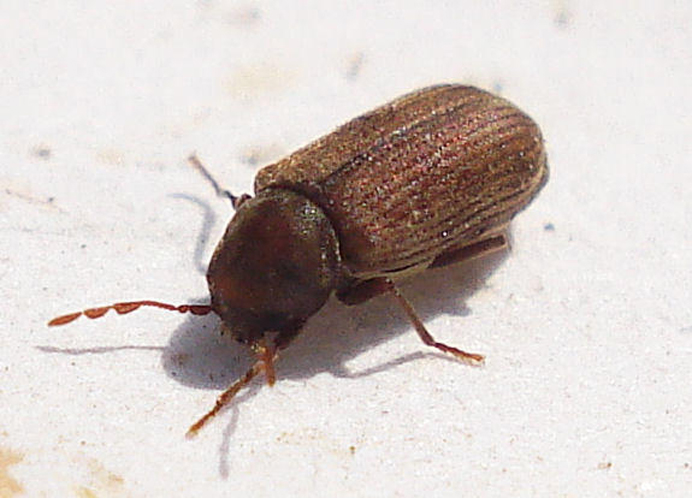
How do you know if you have woodworm? Leading timber and damp proofing company, M&P Preservation, have many years’ experience treating woodworm and provide some useful guidelines on what it is, how to identify it and, most importantly, how to eradicate it.
First of all, what exactly is woodworm? The generic term ‘woodworm’ refers to the larvae of wood boring beetles such as the Common Furniture Beetle (Anobium Punctatum), the Deathwatch Beetle (Xestobium Rufovillosum), House Longhorn Beetle (Hylotrupes Bajulus) and Powderpost Beetle (Lyctus Brunneus) etc., which invade during the breeding season, between May and September. Their natural habitat is trees, but they can get into houses through open windows, on washing that has been drying outside or from old furniture infested in a previous house.
The lifecycle begins with eggs, invisible to the naked eye, laid in crevices within timber. After 4 – 5 weeks, the larvae hatch and tunnel into the timber, remaining hidden unless the timber is broken, revealing what's going on beneath the surface. They can remain in the adult timber for up to five years, feeding and growing larger, before pupating and turning into beetles, which bite through to the surface of the wood, creating the small round holes, about 1.5mm in diameter, commonly associated with woodworm. At this stage, the beetle leaves the timber and can sometimes be seen emerging.
It’s a common misconception that woodworm is found only in older properties. Any wooden structure can be affected, including those in new buildings. Damp timber is most at risk, where wood has become wet, maybe through a roof leak, draining or plumbing problem. If the issue remains unresolved, it may result in an infestation over time. Woodworms typically like nutrient rich sapwood, although the presence of fungi can allow the larvae to exploit more resistant hardwoods.
You might not realise you have woodworm for a number of years, but if you suspect that you have an infestation, here’s how to identify it. Look out for small, round exit holes that appear clean and fresh or for tunnels within the timber. You may also see bore dust, known as frass, beneath the affected timber, caused by the beetles emerging, and you may find dead beetles near the timber. In severe cases, flooring or joists may become weak or damaged. Typical areas of infestation include floor timbers, under stairs cupboards and, sometimes, roof voids.
If you believe you have a problem, it’s highly advised you consult a professional pest control company rather than resort to DIY methods. With more than 40 years’ experience within the field of timber preservation, M&P Preservation is able to provide a safe, immediate and effective solution, ensuring the problem is totally eradicated. A surveyor will initially analyse the nature of the problem and the type of beetle involved, before advising on the most appropriate course of treatment.
Following the survey, M&P Preservation’s highly trained operatives will treat the timber, using the latest insecticidal fluids applied by spray brush or injection, or in deep seated cases, paste formulation, eliminating woodworm on contact. Containing micro-emulsion insecticides, the water-based fluids are non-flammable, low odour, low hazard and HSE approved, and generally rooms can be re-occupied within a couple of hours after treatment. Timbers that are heavily infested may need to be replaced or repaired using resin repair techniques and the team is fully experienced in this.
All M&P Preservation’s surveyors and operators are directly employed, with operators fully CSCS qualified and surveyors trained to Property Care Association standards, ensuring the highest professional standards at all time.
To find out more or to make an appointment for a surveyor’s visit either call 01283 248124 or to email please click here.


